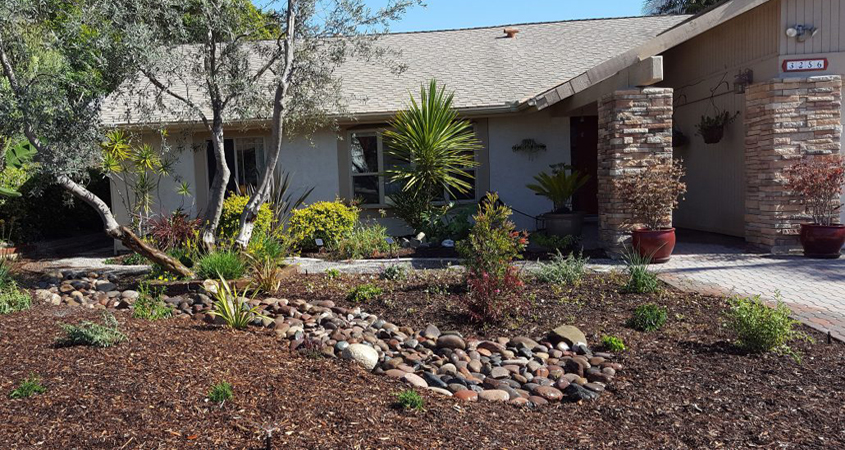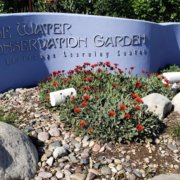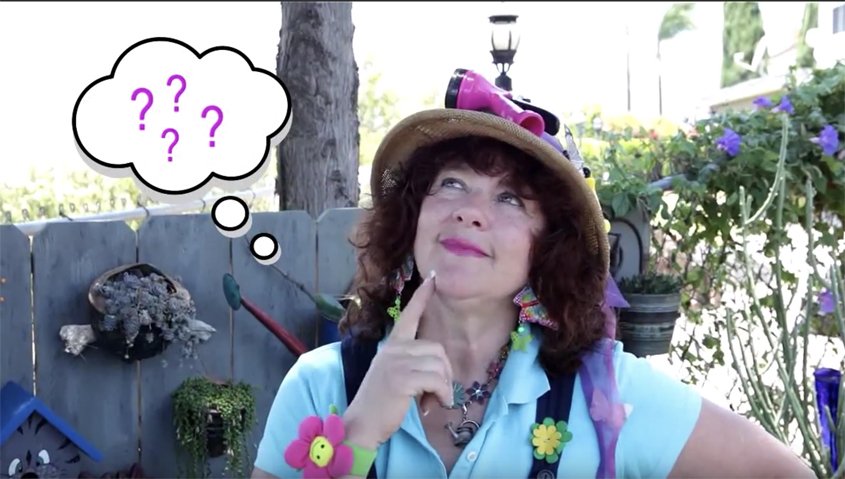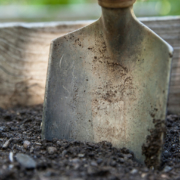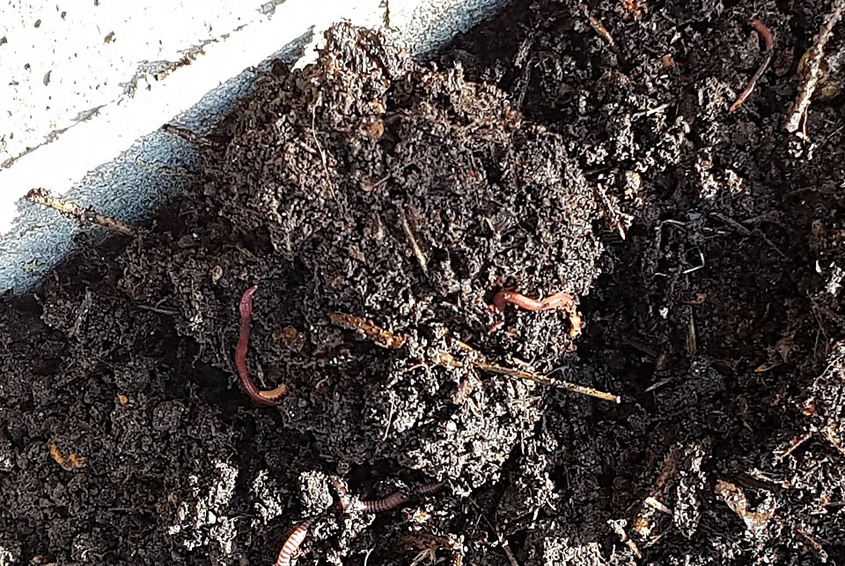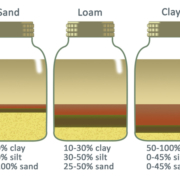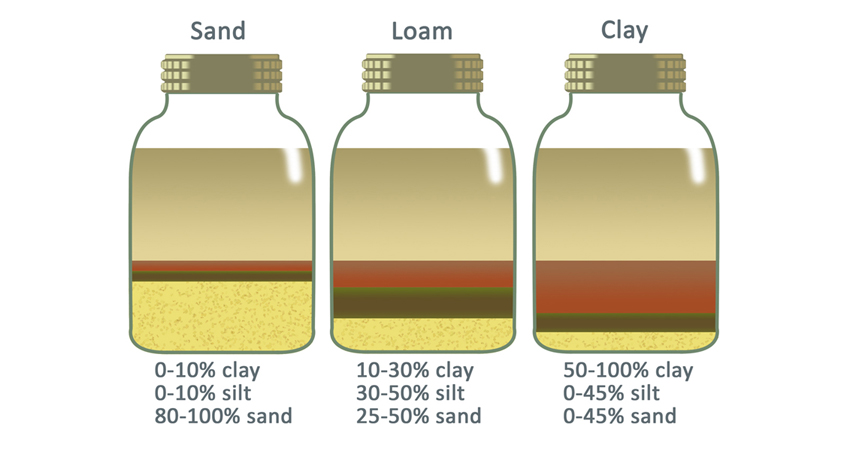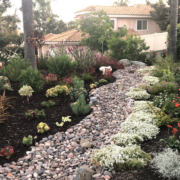Two Vista homeowners received recognition from the Vista Irrigation District Board of Directors for their entries in the District’s 2020 WaterSmart Landscape Contest at its July board meeting.
The annual contest recognizes outstanding waterwise residential landscapes. Winners were selected based on the criteria of overall attractiveness, appropriate plant selection, design, appropriate maintenance, and efficient methods of irrigation.
Pollinator-friendly makeover wins ‘Best in District’ for Zeigler family
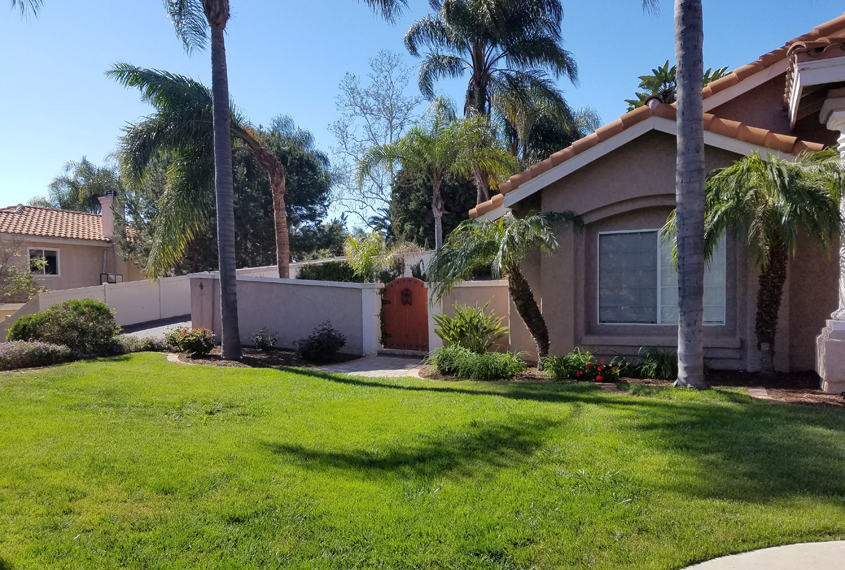
After taking a WaterSmart Landscape workshop last spring, the Zeiglers used their knowledge to transform their monotone front lawn to a colorful bloom filled garden reminiscent of their favorite European gardens. Photo: Vista Irrigation District
Robin and Mike Zeigler received the “Best in District” award and a $250 gift certificate. It was important to Robin, Mike, and their daughter Kallie, to be water smart with their landscaping choices during a comprehensive landscape and irrigation upgrade. After taking a WaterSmart Landscape workshop last spring, the Zeiglers used their knowledge to transform their monotone front lawn to a colorful bloom filled garden reminiscent of their favorite European gardens.
The Zeiglers’ landscape includes a wide array of drought-tolerant plants that provide year-round blooms that attract butterflies, birds, and bees. Vibrant splashes of magenta and coral geraniums, bright yellow yarrow, and Russian blue sage line the flagstone walkway. Clusters of white alyssum flowers contrast with the bright red and green hues of aeoniums, sedums, and kangaroo paws (Anigozanthos), delivering a beautiful backdrop for the river rock bed flowing through the yard.
Plant selection includes a variety of pollinator-friendly choices such as red sage, “Desert Blaze” Salvia gregii, “Margarita” Penstemon, “Hot Raspberry” butterfly bush, with Wild Dagga or Lion’s Tail (Leonotis leonurus) mixed in with traditional landscape favorites such as lantanas, geraniums, and star jasmine. The Zeiglers have enjoyed their neighbors stopping to ask who did the landscaping and complimenting the transformation. Robin Zeigler says she “couldn’t be happier” with the results and has already started on the backyard.
Waterwise landscaping education helps homeowner create a lush new garden
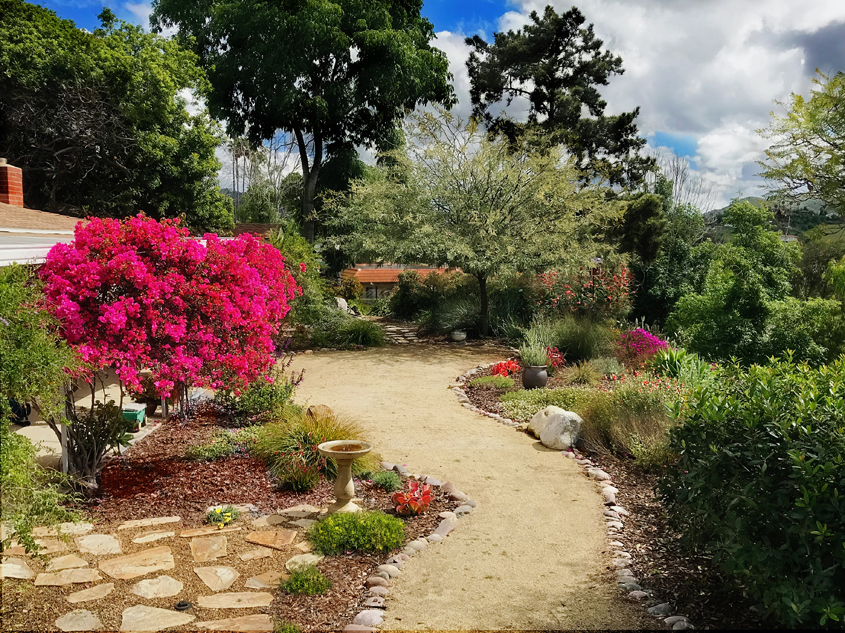
Understanding the components of a Waterwise watering system and basic landscape design elements helped give the Woodward family the confidence to follow through with their landscape makeover. Photo: Vista Irrigation District
Beverly Woodward received an honorable mention award. The Woodwards wanted to get rid of their front lawn which took too much time, effort, and expense to maintain. The Woodwards took advantage of courses at the Alta Vista Botanical Gardens and rebates from the San Diego County Water Authority to transform their landscape to a lush garden that reminds them of their favorite hiking spots. Understanding the components of a Waterwise watering system and basic landscape design elements helped give them the confidence to follow through with their landscape makeover.
“With rebates available for turf removal, now is a great time to replace your lawn with a beautiful WaterSmart landscape,” said Brent Reyes, water conservation specialist for the district.
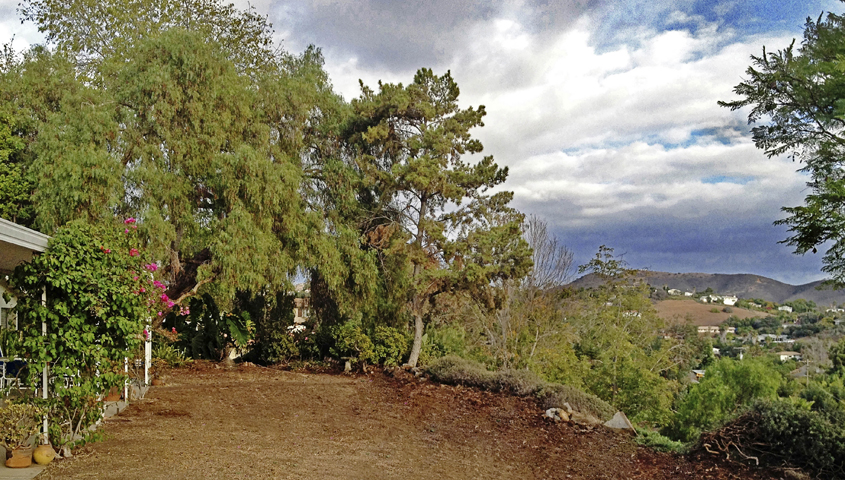
The Woodward landscaping prior to its makeover. Photo: Vista Irrigation District
The District joined other local agencies holding landscape contests this year, including the Olivenhain Municipal Water District, Otay Water District, Padre Dam Municipal Water District, Rincon del Diablo Municipal Water District, San Dieguito Water District, Sweetwater Authority, Vallecitos Water District, California American Water, and the cities of Escondido and Oceanside.
For more information about the contest and to see more examples of WaterSmart landscaping, go to: www.landscapecontest.com. Visit the district’s web site (www.vidwater.org) or call (760) 597-3107 to find out more ways to save water.
The Vista Irrigation District provides water service to more than 136,000 people in the city of Vista, and portions of San Marcos, Escondido, Oceanside, and unincorporated areas of San Diego County.
